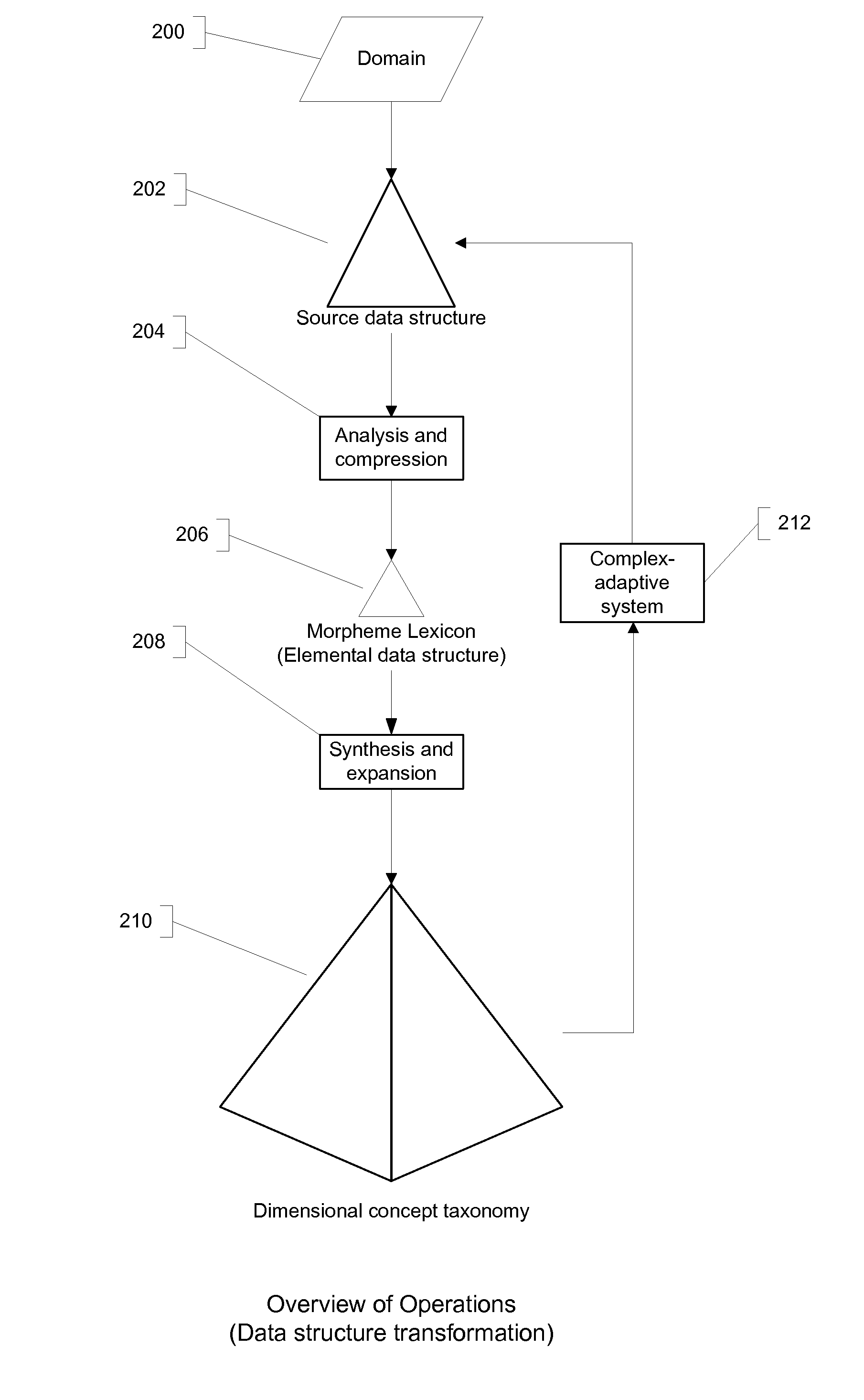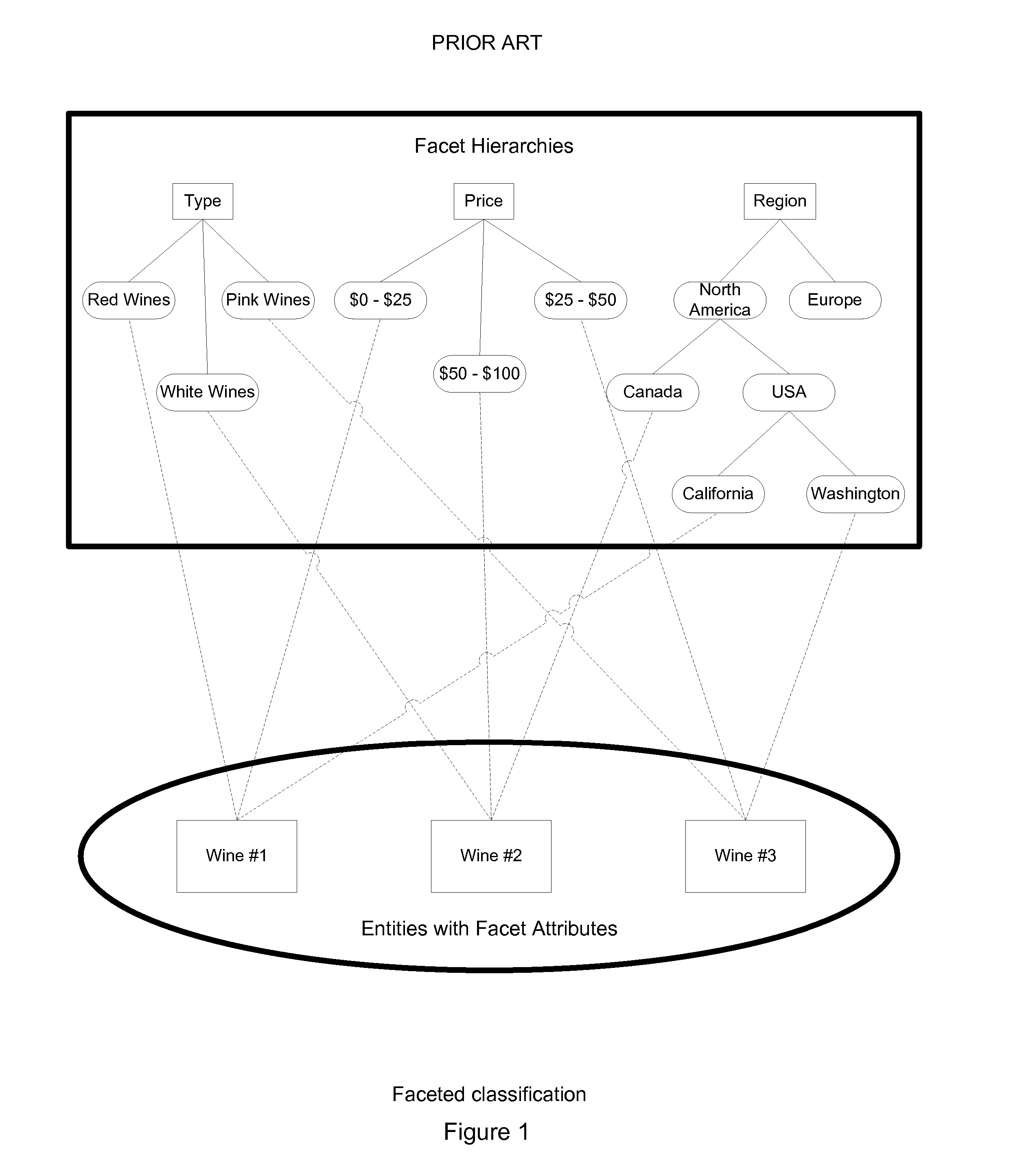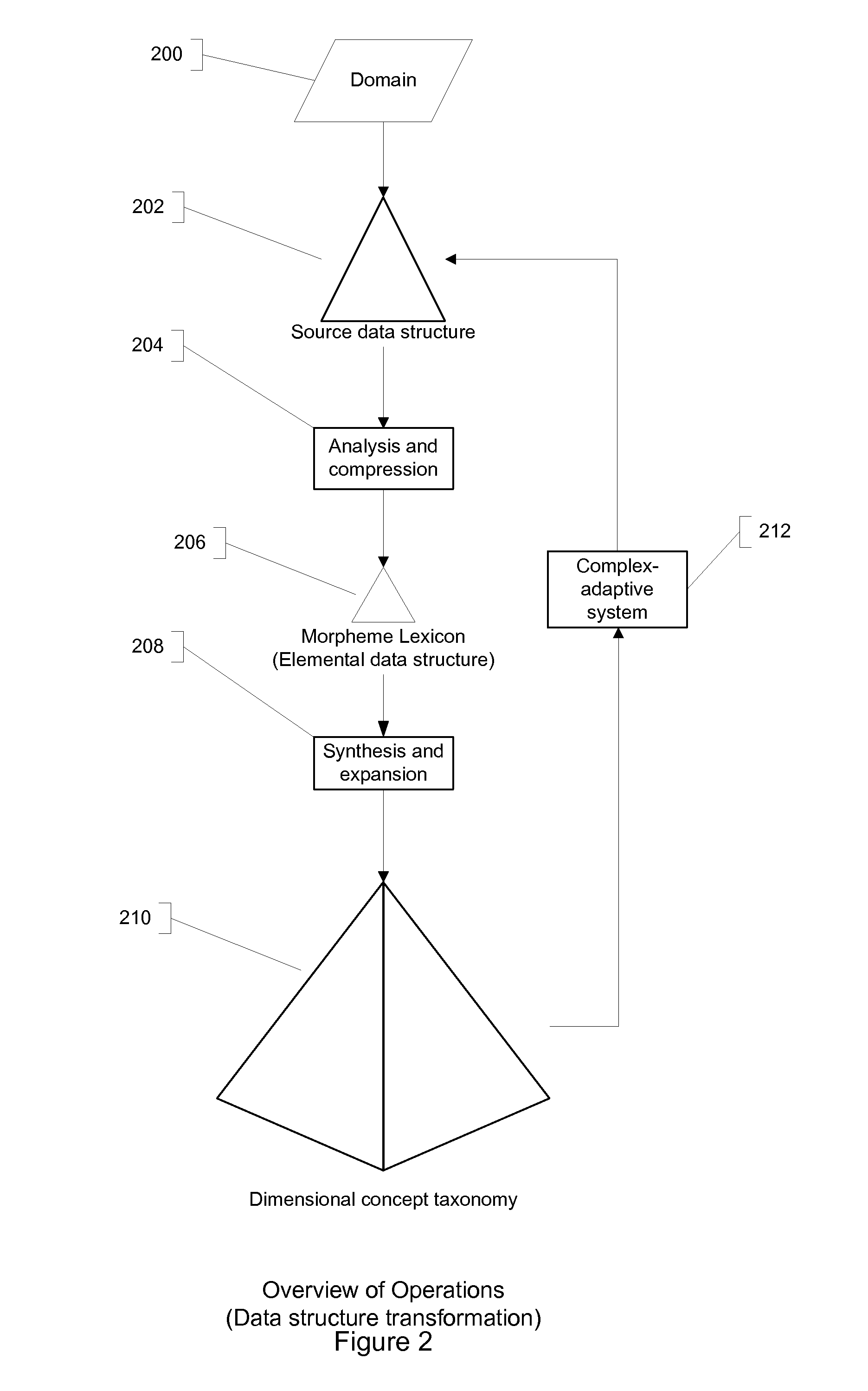Complex-adaptive system for providing a faceted classification
a complex adaptation and faceted classification technology, applied in the field of classification systems, can solve the problems of slow adoption of faceted classification, high complexity of faceted classification, and high difficulty in intellectually challenging facets,
- Summary
- Abstract
- Description
- Claims
- Application Information
AI Technical Summary
Benefits of technology
Problems solved by technology
Method used
Image
Examples
Embodiment Construction
1.1 System Operation
1.1.1 Overview
[0060]FIGS. 2-8 provide an overview of operations and a system for constructing and managing dimensional information structures such as to create a dimensional concept taxonomy for a domain. In particular, FIGS. 2-8 show a knowledge representation model useful for such operations as well as certain dimensional data structures and constructs. Also shown are methods of data structure transformation including a complex-adaptive system and an enhanced method of faceted classification.
1.1.1.1 Overview of Operations
Analysis and Compression
[0061]FIG. 2 illustrates operations to construct a dimensional concept taxonomy 210 for a domain 200 comprising a corpus of information that is the subject matter of a classification. Domain 200 may be represented by a source data structure 202 comprised of a source structure schema and a set of source data entities derived from the domain 200 for inputting to a process of analysis and compression 204. The proce...
PUM
 Login to View More
Login to View More Abstract
Description
Claims
Application Information
 Login to View More
Login to View More - R&D
- Intellectual Property
- Life Sciences
- Materials
- Tech Scout
- Unparalleled Data Quality
- Higher Quality Content
- 60% Fewer Hallucinations
Browse by: Latest US Patents, China's latest patents, Technical Efficacy Thesaurus, Application Domain, Technology Topic, Popular Technical Reports.
© 2025 PatSnap. All rights reserved.Legal|Privacy policy|Modern Slavery Act Transparency Statement|Sitemap|About US| Contact US: help@patsnap.com



